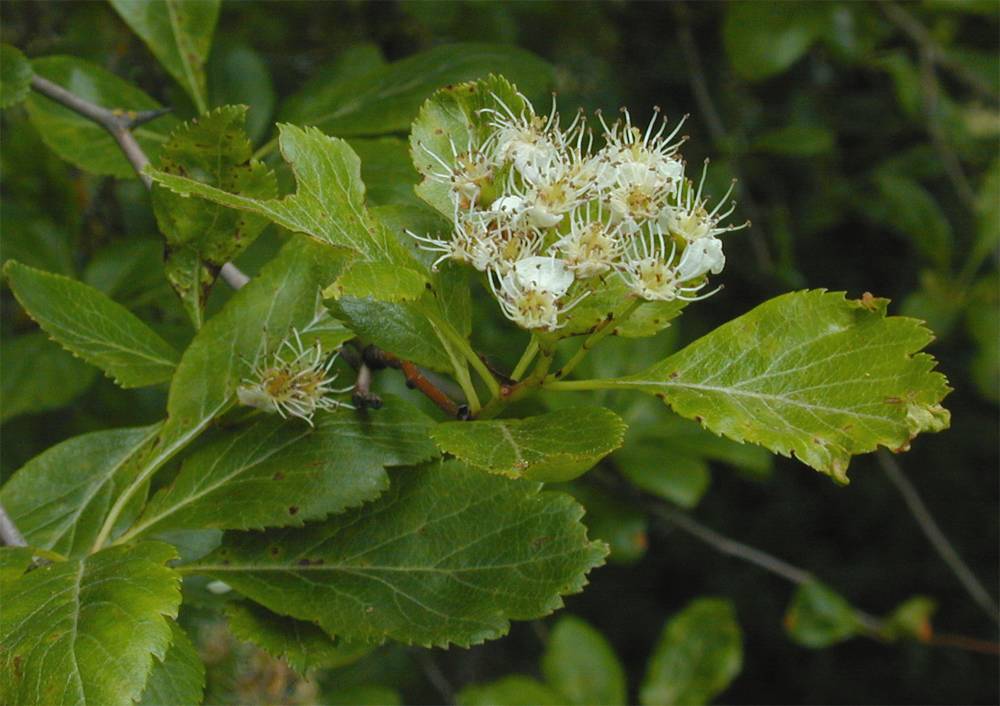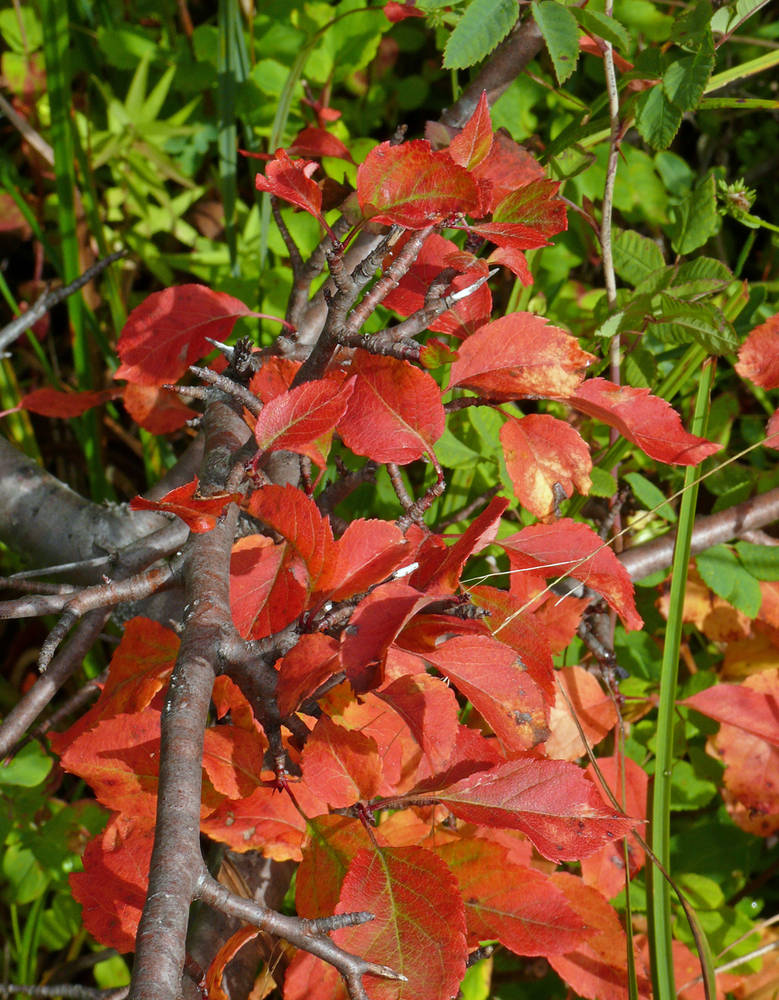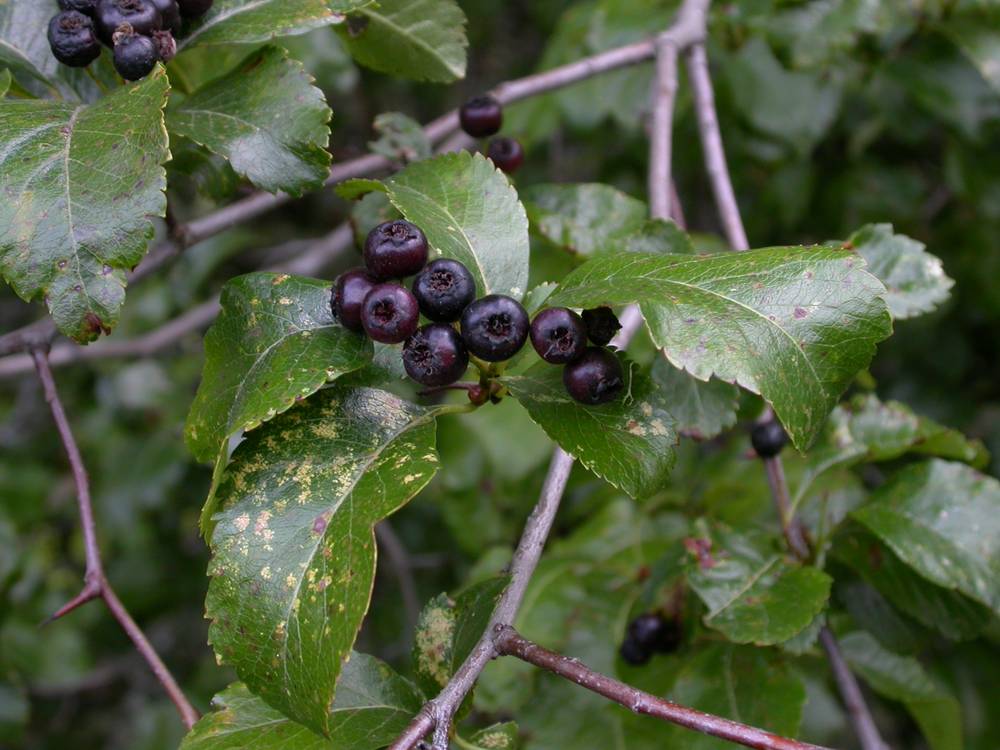Written By: Anne Ternes
- Scientific Name: Crataegus gaylussacia or C. suksdorfii
- Canopy Layer: Overstory (at maturity)
- Attracts: Butterflies and Moths, Pollinators, Birds, and Mammals of all size
- Portland Plant List: Yes!

Suksdorf’s hawthorn is a tall, broad, imposing tree found in the wetlands and forests of the northern Pacific Coast. It, along with many other Pacific Northwest plants, is named after Wilhelm Suksdorf, one of the leading botanists of the Pacific Northwest in the twentieth century. The flowers of Suksdorf’s hawthorn attract insect pollinators while their multiple stems create habitat for birds and mammals. Most impressively, Suksdorf’s hawthorn is a host plant for dozens of butterfly and moth species. Easy to care for and visually striking, Suksdorf’s hawthorn, above anything else, is a powerhouse of habitat creation.

Suksdorf’s hawthorn is native to the west coast of North America, from southeast Alaska to northern California. In the continental United States, it is native to areas west of the cascades, parts of Washington and Oregon east of the Columbia Plateau, northern Idaho, and one county in Montana. Suksdorf’s hawthorn grows in five of the eight plant communities in the Portland-Vancouver Metro area, absent only from marshes, prairies, and rocky outcrops. They are often found in riparian forests, meaning forests adjacent to rivers and streams, and wetlands. They are not picky when it comes to habitat, growing well in full sun to full shade and in soils that range from dry to seasonally wet. This wide range of habitat tolerance makes Suksdorf’s hawthorn very versatile in the garden. Plant them on the border of a rain garden or low spot that seasonally floods, as a succession tree, or alongside other native trees and shrubs to create a thicket of continuous habitat. If you find your Suksdorf’s hawthorn is not doing well in its current spot, don’t fret, they tolerate relocation well.

From their rosacea springtime flowers to their lively harvest-time hues, hawthorns have long been chosen as ornamental plants, and Suksdorf’s hawthorn is no exception. Clusters of small, stark white flowers with soft pink, proud anthers appear in April and persist through June. The clusters have a backdrop of serrated leaves that range from light to dark green. The berries darken throughout July, ending in a deep purple that nearly looks black, giving Suksdorf’s hawthorn one of its common names, black hawthorn. Then, beginning at the end of August, the green of the leaves fades, replaced by a bold, red-orange. All-in-all, Suksdorf’s hawthorn provides fantastic visual interest from spring to fall and excellent habitat year-round.

At maturity, Suksdorf’s hawthorn reaches heights between thirty-five and forty-five feet and a width of twenty-five feet. Set firmly in the tallest canopy layer, Suksdorf’s hawthorn helps reduce soil erosion by breaking the speed of falling rain before it hits the ground. In addition, trees (the plant type usually found in the overstory layer) have extensive root systems that hold soil in place and allow trees of the same species to communicate, increasing survival rates. Trees are also a favorite sheltering site for birds and mammals, both small and large. Suksdorf’s hawthorn, in particular, attracts birds that like to nest in thickets created by the tree’s multi-stemmed form. Suksdorf’s hawthorn attracts finches, sparrows, waterfowl, woodpeckers, crows, wrens, waxwings, and many more. It is also a host for over eighty (eighty!) species of butterflies and moths.

Want to incorporate Suksdorf’s hawthorn in your space? Great! They are usually available at local nurseries and garden stores. Your hawthorn may require extra attention as it establishes itself, such as watering and protection from herbivores, but once established, it will require very little. If your space is small or you don’t want your Suksdorf’s hawthorn to spread out, prune in the winter months when the tree is dormant. The overstory layer is arguably the most difficult to fill in due to the time it takes for trees to mature. However, you will not have to wait for Suksdorf’s hawthorn to reach maturity before it begins benefitting your area. As they grow, they will fill in the shrub and understory layers, providing all of the benefits plants in those layers do as it strives to reach the top. As it grows, it will always produce food and shelter for the butterflies and moths, pollinators, birds, and mammals that seek it.
Sources:
- “Crataegus suksdorfii. (Sarg.) Kruschke.” plants.usda.gov. U.S. Department of Agriculture, Natural Resources Conservation Service. https://plants.usda.gov/home/plantProfile?symbol=CRSU16
- “hawthorn.” nwf.org/NativePlantFinder. U.S. Department of Agriculture, Forest Service, Nation Wildlife Federation, University of Delaware. https://www.nwf.org/NativePlantFinder/Plants/890
- Portland Plant List. Bureau of Planning and Sustainability, City of Portland, Oregon. 2016. Pgs. 2.1-2; 2.2-1; 2.3-1; 2.4-1; 2.5-1; 3.2-2; 3.17.1. https://www.portland.gov/sites/default/files/2018-12/Portland_Plant_List_2016_Update_Final2.pdf
- “Suksdorf’s Hawthorn.” Native Plants Database. Audubon. https://www.audubon.org/native-plants/search?zipcode=97203&active_tab=full_results&attribute=&attribute_tier1=&resource=&resource_tier1=&bird_type=&bird_type_tier1=&page=1&page_tier1=1